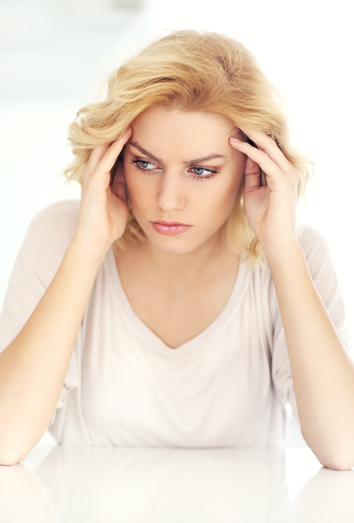Anxiety is an alert signal that warns us of imminent danger; it is the way our body has to act against external or internal stimuli that are perceived as threatening and/or dangerous.

Anxiety manifests itself through psychological, behavioral, and physical or physiological symptoms, and they entail discomfort, suffering, or an unpleasant sensation that makes it difficult for us to function properly in our day-to-day lives.
Anxiety: when it is no longer adaptive
However, this anxiety that seems adaptive (in the face of real danger) is not when it appears in our lives without threatening stimuli that really put us in danger. Many times, the danger is actually imagined (for example, when webby thinking about the negative, or through catastrophic thoughts).
In these cases, we speak of anxiety as a disorder, since it hinders proper daily functioning and generates psychological suffering and physical discomfort. Anxiety in this sense is a very frequent disorder in the population, especially in the female gender, and affects 5-10% of people worldwide, according to data from the WHO (World Health Organization).
Within anxiety itself, we find different anxiety disorders (that is, we can suffer anxiety as a symptom or anxiety as a disorder: generalized anxiety disorder, panic disorder, social phobia, specific phobia, agoraphobia, etc.).
The 3 types of symptoms in anxiety
When we suffer from anxiety, our body is hyper activated (due to hyper activation of the sympathetic nervous system). Through it, we experience symptoms of three types: physical or physiological, cognitive or psychological, and behavioral.
Physical symptoms
At the physiological level, anxiety manifests itself through the activation of the autonomic nervous system. In this case, the “alarm” mechanism of our body will activate in a maladaptive way, because there is no real danger that justifies it.
These types of symptoms can include external changes (for example, tremors) or internal (tachycardia, increased respiratory rate…). We talk about:
- Chest pain or pressure
- Pupil dilation
- Tremors
- Tachycardia
- Increased blood pressure
- Decreased salivation
- Nausea
- Vomiting
- Dizziness
- Dizziness
- Increased breathing rate (heavy breathing)
- Excessive sweating
Cognitive or psychological symptoms
Cognitive or psychological symptoms have to do with the internal experience of anxiety, and include:
- Irrational thoughts
- “Alarm” feeling
- Restlessness or agitation
- Fear, panic
- Anxious apprehension (“fear of fear”)
- Obsessive ideas or intrusions
- Feeling of going crazy or losing
- Anticipatory negative thoughts (of the future)
- Ruminative thoughts (looped)
- Feeling overwhelmed and nervous
- Distress
Behavioral symptoms
Third, at the motor or behavioral level, the person with anxiety may experience a series of observable behavioral responses. In this case, we are talking about symptoms that include changes in facial expression, body, movements or behavior itself, and usually include responses of:
- Avoidance
- Exhaust
- Struggle
Are you suffering from an anxiety disorder?
When we suffer from a series of anxiety symptoms, which meet a series of diagnostic criteria and which cause us suffering and/or interference in daily life, then we speak of an as such.
We have mentioned some of them, although the most prevalent are panic disorder (or anxiety disorder) and specific phobias (for example: driving, spider phobia, etc.). On the other hand, not all anxiety disorders interfere in daily life in the same way (suffering from agoraphobia is not the same as phobia of spiders, for example).
In relation to the distribution by sex, according to studies and data from the DSM-5 (Diagnostic and Statistical Manual of Mental Disorders), women are more prone to suffering from anxiety in general and anxiety disorders more specifically, compared to men? The men.
There is only one exception, and that is social phobia, which in the clinical population is equally prevalent between men and women (and even literally higher in men, according to some studies).






